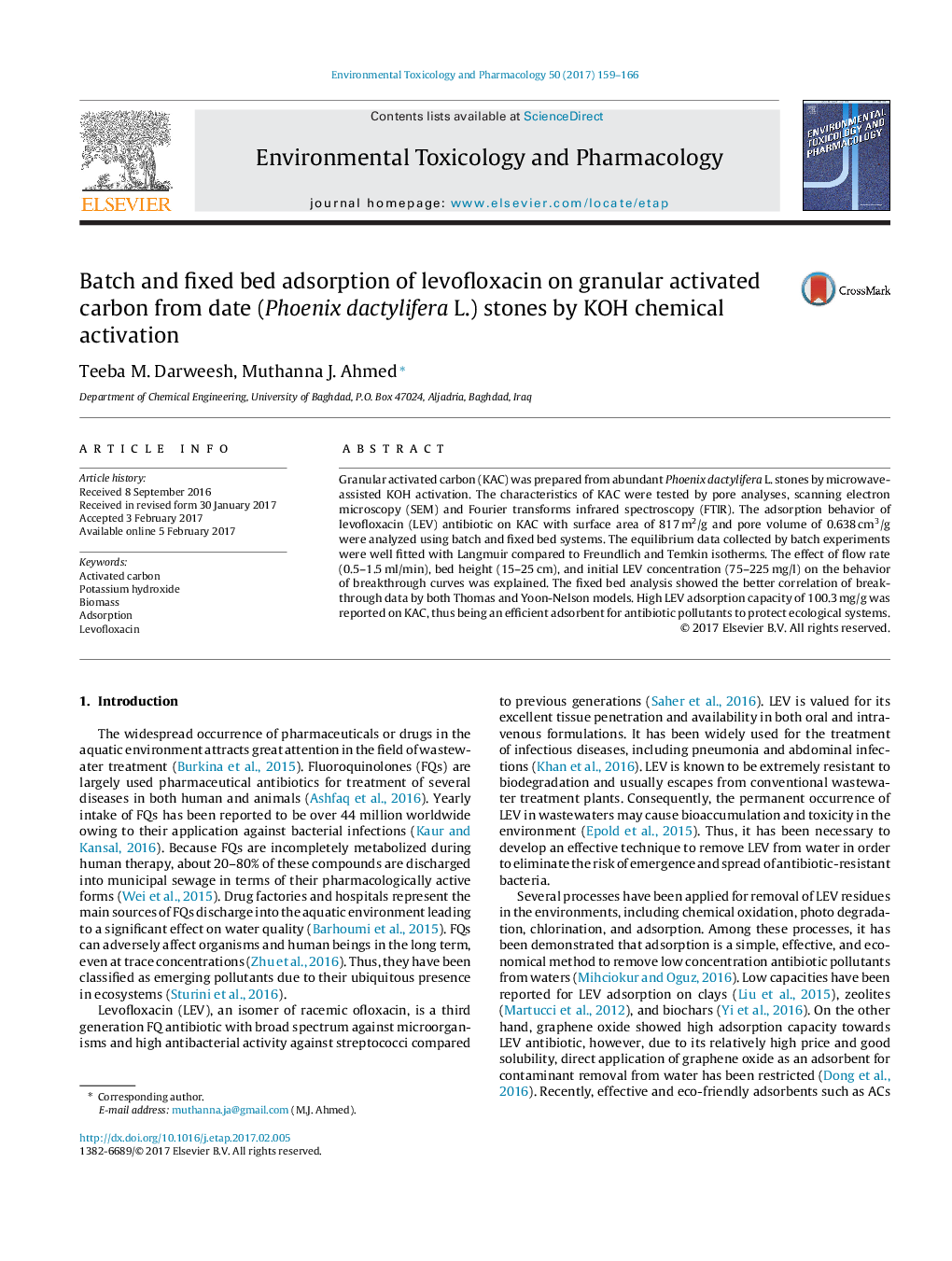| Article ID | Journal | Published Year | Pages | File Type |
|---|---|---|---|---|
| 5559717 | Environmental Toxicology and Pharmacology | 2017 | 8 Pages |
â¢KOH activated carbon (KAC) was prepared from date stones.â¢Levofloxacin (LEV) was adsorbed on KAC in batch and continuous modes.â¢Effects of variables on isotherms and breakthrough curves were illustrated.â¢High LEV capacity was reported by best Langmuir isotherm.â¢Thomas and Yoon-Nelson models were appropriate for LEV-KAC system.
Granular activated carbon (KAC) was prepared from abundant Phoenix dactylifera L. stones by microwave- assisted KOH activation. The characteristics of KAC were tested by pore analyses, scanning electron microscopy (SEM) and Fourier transforms infrared spectroscopy (FTIR). The adsorption behavior of levofloxacin (LEV) antibiotic on KAC with surface area of 817Â m2/g and pore volume of 0.638Â cm3/g were analyzed using batch and fixed bed systems. The equilibrium data collected by batch experiments were well fitted with Langmuir compared to Freundlich and Temkin isotherms. The effect of flow rate (0.5-1.5Â ml/min), bed height (15-25Â cm), and initial LEV concentration (75-225Â mg/l) on the behavior of breakthrough curves was explained. The fixed bed analysis showed the better correlation of breakthrough data by both Thomas and Yoon-Nelson models. High LEV adsorption capacity of 100.3Â mg/g was reported on KAC, thus being an efficient adsorbent for antibiotic pollutants to protect ecological systems.
